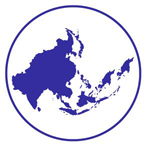Presentation Title
Integration and Disintegration in East Asia: Korea and Hong Kong in the Cold War Era
Location
RCC Small Ballroom
Start Date
11-10-2013 1:45 PM
End Date
11-10-2013 3:15 PM
Abstract
During the Cold War era, in order to seek a new regional order in East Asia, the newly independent states, which were ruled by post-colonialism and nationalism, made various attempts to integrate the region and to establish new regional institutions. The Asian People’s Anti-Communist League was one of these kinds for which mainly South Korea and Taiwan tried to carry out forward. In fact, this type of regional institution did not ever succeed due to the so- called U.S. policy of “divide and rule” in East Asia.
The U.S.’s aim was to maintain the status quo of power among Japan, Taiwan, Korea, and Hong Kong rather than integrating them together, so as to keep its supremacy in the regional politics. As a result, though South Korea and Hong Kong were not integrated as a strategic region for neither political nor diplomatic purpose. Cultural and economic interactions between the two city states were developed. In this paper, I will focus on East Asia during the Cold War Era and give a macroscopic view of the distinctive features of the new international order of East Asia.
Integration and Disintegration in East Asia: Korea and Hong Kong in the Cold War Era
RCC Small Ballroom
During the Cold War era, in order to seek a new regional order in East Asia, the newly independent states, which were ruled by post-colonialism and nationalism, made various attempts to integrate the region and to establish new regional institutions. The Asian People’s Anti-Communist League was one of these kinds for which mainly South Korea and Taiwan tried to carry out forward. In fact, this type of regional institution did not ever succeed due to the so- called U.S. policy of “divide and rule” in East Asia.
The U.S.’s aim was to maintain the status quo of power among Japan, Taiwan, Korea, and Hong Kong rather than integrating them together, so as to keep its supremacy in the regional politics. As a result, though South Korea and Hong Kong were not integrated as a strategic region for neither political nor diplomatic purpose. Cultural and economic interactions between the two city states were developed. In this paper, I will focus on East Asia during the Cold War Era and give a macroscopic view of the distinctive features of the new international order of East Asia.

Comments
Presentation is included in Panel 6: Between Politics and Culture: Asianism and Transnational Link among Hong Kong, Japan, and Korea in the Cold War